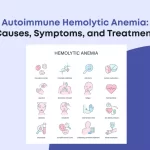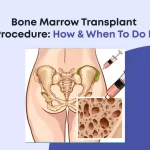
Foods to Increase Iron Absorption in Your Body
Iron, a necessary mineral vital for maintaining good health, is obtained through your diet. From carrying oxygen to supporting metabolism, iron is essential for various bodily functions. While the body can store iron, it cannot produce it, making consumption the sole source of gaining this essential mineral. However, not all iron we consume gets absorbed efficiently.
In this blog, we’ll explore how you can enhance iron absorption through your diet. We’ll also be discussing the benefits of natural sources over supplements.
How Do You Increase Iron Absorption Faster by Diet?
The good news is that you can naturally boost iron absorption by making smart dietary choices. Including certain foods in your meals can help your body absorb iron more effectively.
Here are some iron-rich foods and the factors that can enhance their absorption:
● Choosing Iron-Rich Foods
First and foremost, consider having iron-rich foods in your daily meals. Think red meat, poultry, and fish for heme iron and lentils, beans, and leafy greens for non-heme iron. These dietary choices lay a robust foundation for maintaining healthy iron levels.
● Pairing Iron-Rich Foods with Vitamin C
Boost your iron absorption by incorporating vitamin C-rich foods into your diet. Squeeze a fresh lemon on your leafy greens or munch on a juicy orange with your beans. These are the best sources of iron as well as Vitamin C. The combination of iron and vitamin C is a dynamic duo that your body will thank you for.
● Cooking with Cast Iron
Consider cooking with cast iron. The use of cast iron cookware can infuse your meals with a dose of iron. This is going to add quietly to your daily intake. It’s a simple way to ensure your body gets the iron it needs for overall health.
● Avoiding Foods that Inhibit Iron Absorption
As you start an iron-rich diet, be mindful of substances that can hinder iron absorption. Calcium and tannins, found in dairy and some teas, can act as iron absorption roadblocks. Minimize their presence during meals featuring iron-rich foods for maximum absorption.
● Iron Supplements
Iron pills and injections serve as supplements for individuals grappling with iron deficiency. Iron pills, readily available and easy to incorporate into your routine, are a popular choice. On the other hand, iron injections offer a quicker boost but involve a more invasive method.
Iron Pills vs. Iron Injections: What Should You Prefer?
Many people resort to supplements when trying to meet their iron needs. Iron pills and injections are common options, each with its set of advantages and drawbacks. It’s essential to understand the differences and consider what might work best for you.
Pros and Cons
Iron pills are convenient, but they might bring along gastrointestinal discomfort for some. On the flip side, iron injections provide a faster solution but require a doctor’s intervention. Think about your preferences, lifestyle, and health conditions when deciding which path to take.
When and How to Take Iron Pills?
If you opt for iron supplements, the timing and method of consumption can significantly impact their effectiveness.
Suppose you opt for iron pills; then timing and method matter. Taking them at the right time and in the proper way can maximize their absorption. At the same time, it can minimize their potential side effects.
Now, we will see the best practices for consuming iron pills:
● Optimal Timing
Take your iron pills with meals for optimal absorption. Timing matters – combining them with breakfast, lunch, or dinner can enhance their absorption. And it minimizes the risk of digestive discomfort.
● Avoiding Interference
Certain substances and foods can interfere with iron absorption. Avoid pairing iron supplements with calcium-rich foods, as calcium can impede absorption. Similarly, steer clear of consuming coffee or tea around supplement intake. As a result, they may hinder iron absorption.
Exploring Natural Sources of Iron
Yes, supplements have their place. Yet, there are unparalleled benefits in foods for your iron needs.
Heme vs. Non-Heme Iron
Understand the difference between heme and non-heme iron. Heme iron, abundant in animal products, is more readily absorbed by the body. Meanwhile, non-heme iron, found in plant-based sources, requires strategic combinations for optimal absorption.
Balancing a Plant-Based Diet
Pair iron-rich plant foods with vitamin C sources, like bell peppers or strawberries. It enhances absorption and ensures a well-rounded iron profile.
Balancing Your Iron Intake
Maintaining balance is the key to a healthy iron intake. Here’s how you can:
Preventing Iron Overload
While iron is essential, too much of a good thing can lead to issues. But be careful of excessive iron intake. As it may result in iron overload, causing adverse health effects.
Regular Monitoring
Consider consulting a healthcare professional regularly, especially if you are at risk of iron deficiency or overload. Periodic blood tests help you keep track of your iron levels. This examination will allow you to make any necessary changes to your food or supplement routine.
Conclusion
Keep your iron levels in check. It’s all about finding a balance between what you eat and any supplements you might consider. Pay attention to what your body is telling you—it’s like your body’s personal compass. By doing this, you’re not just following a health journey; you’re making it a mindful and effective adventure. Make sure your body gets the iron it craves for an all-around healthy vibe.








